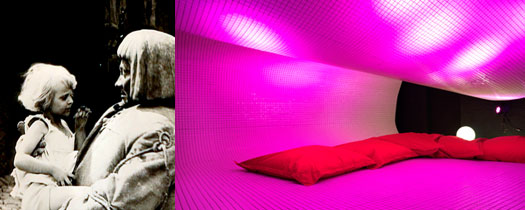
When they called us to propose working with ceramics, the first question which came to mind was – What can’t you do with ceramics? It’s most probably a strange question to ask, but that’s what we thought. Anyway, that’s how we started thinking about what a material represents , a material of any type. This led us to believe that materials are pretty real substances which are very reluctant to be absorbed by the latest trends. In other words, there are no old-fashioned, passé or avant-garde materials. However, there are avant-garde, old-fashioned or slipshod uses of materials. Just like people – bad people as such probably don’t exist, but there are horrifying deeds, actions, and attitudes. You may not experience them, but they do exist.
Let’s get to the point – ceramics don’t move. Music can’t be seen. Our dreams won’t come true. We pause to weep for a moment …. Stop now. The Quartet of electric motors in 3.5-1 m, opus 1, known as Ceramics in motion, is a proposed project which gives physical shape to an imaginary mental space in the form of a ceramic surface interpreted by four 1,000 W electric motors which move the surface at a pace of 1 m every 30 seconds. The two front motors move along a space of 3.5 m while the two rear motors move along a space of 1 m. Thus begins a gentle, cyclic choreography confined by the limitations of the material, where the motors play at waiting for one another, at getting ahead and re-finding one another in order to show that ceramics don’t have a fixed time in space either. Now the ceramics move, music becomes visible and a mental space materialises before our very eyes . E pur si muove!
WHERE: Casa Decor 2007. Antigua fábrica Fabra i Coats, Segre 30, 08030 Barcelona.
WHAT IT IS: The ASCER show pavilion.
WHAT IT IS LIKE: A surface of ceramic tesserae which rises and folds on itself with the help of four motors which guide its movement .
TECHNICAL DESCRIPTION:
There are seven main parts of 92 x 10000 cm, each made up of sub-parts of 92×92 cm in a sequence of 4+2+4. Tesserae have been attached to each of these subparts on 9 30.5×30.5 cm sheets. The substructure of all these main parts and subparts is made up of a 5×5 cm mesh of 4 mm rods soldered together. A 8×40 mm rail has been soldered to this mesh to hold the seven main parts together in a line.
This mesh hangs from 4 pulleys which can hold 1,500 kg each, making a total of 6,000 kg . The pulleys are controlled by an automaton and cover a distance which varies between 3.5 and 1 m. They are situated 4.40 m above the ground on a steel trestle made of 4 HEB-300 pillars and 4 IPE-300 beams. Just to make really sure.
This whole framework forms a structure of 22,680 tesserae with 13,608 more tesserae attached directly to the ground, making a total of 36,288 tesserae . Each one of them is 50×50 mm in MC-19 white, is called Logos and is made by Equipe.
